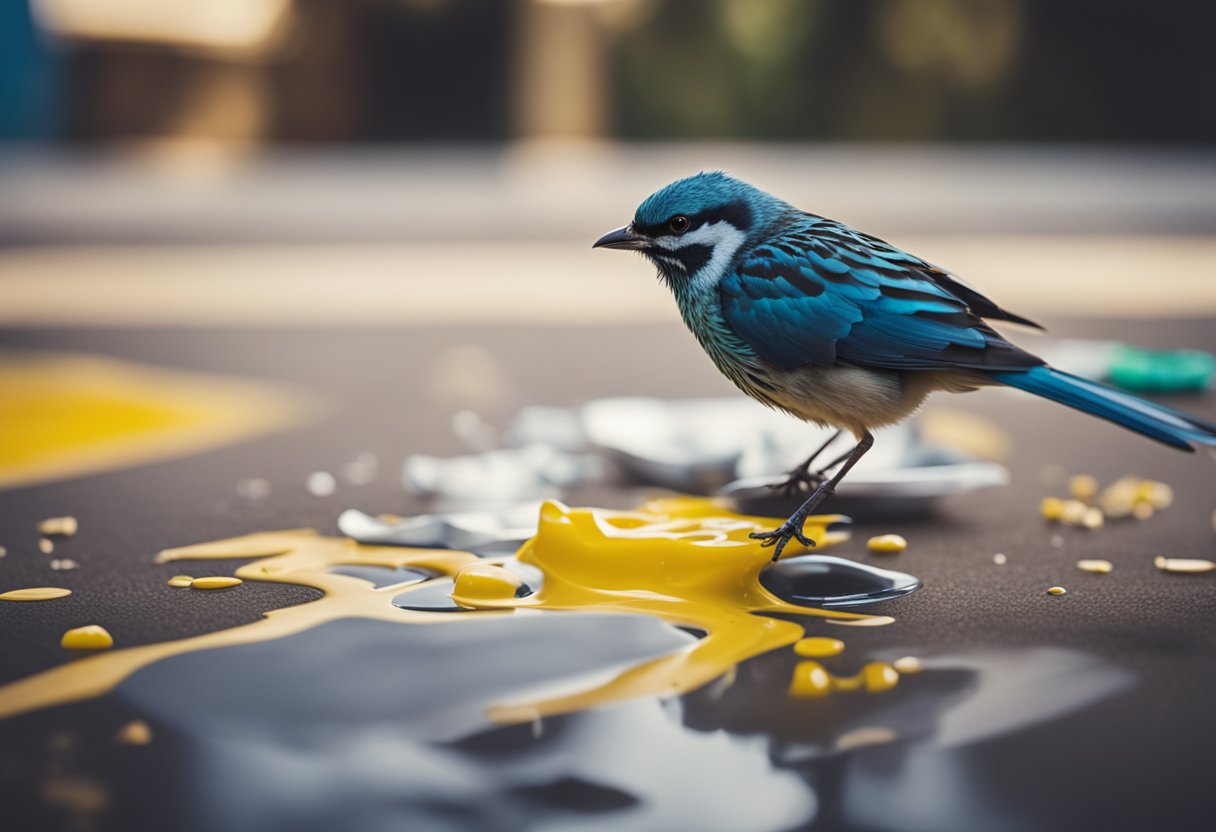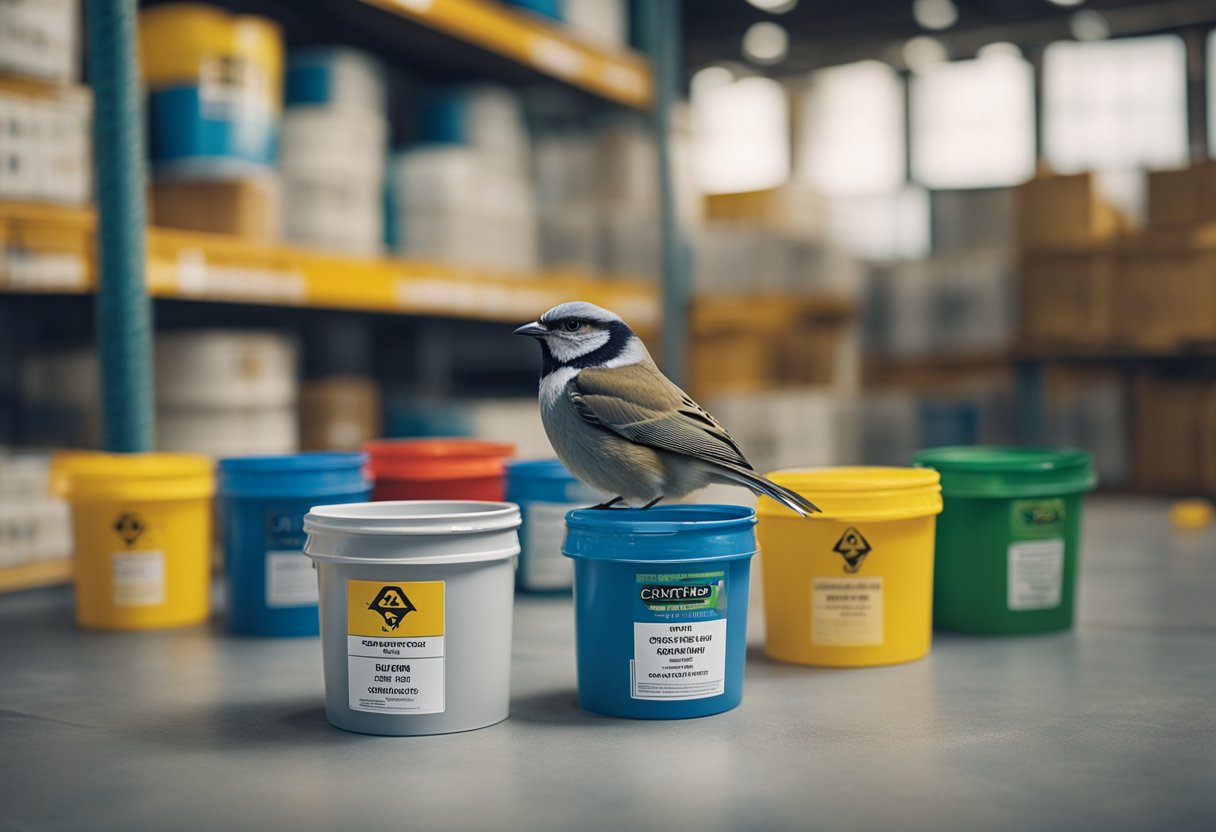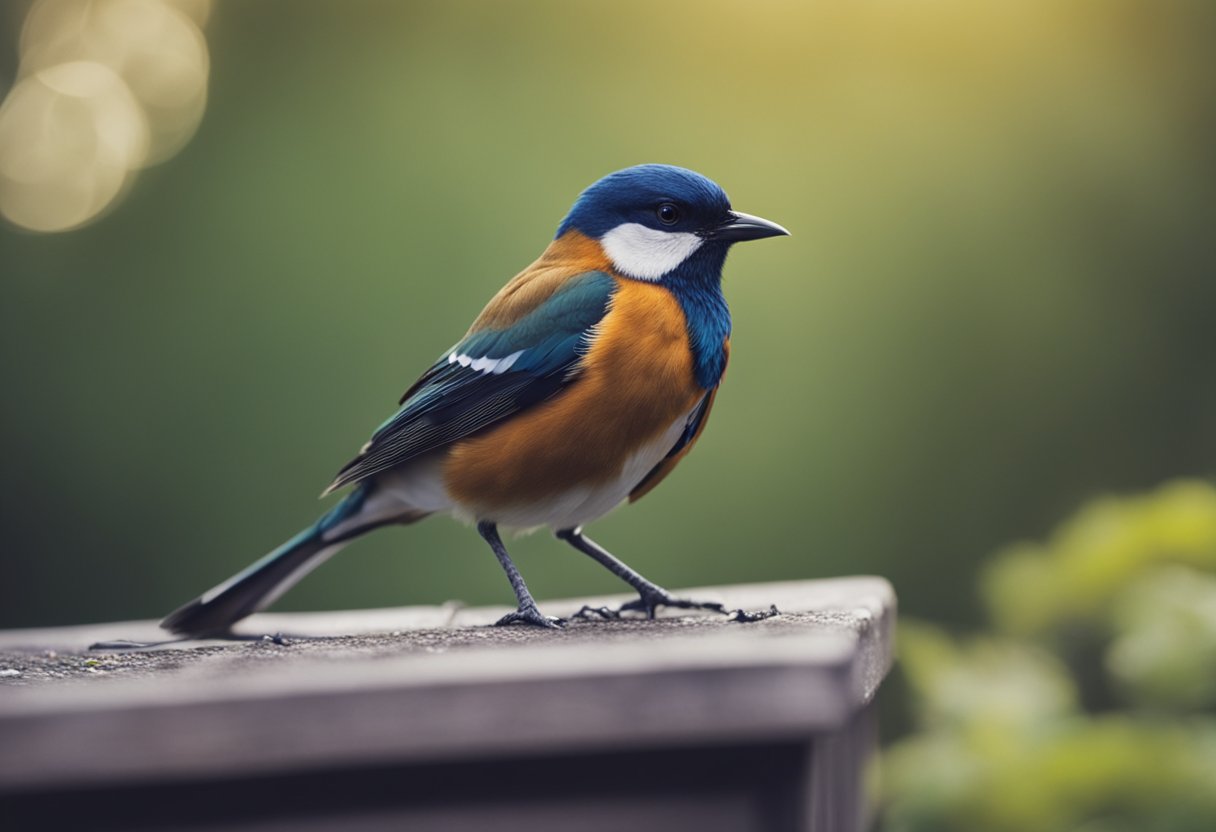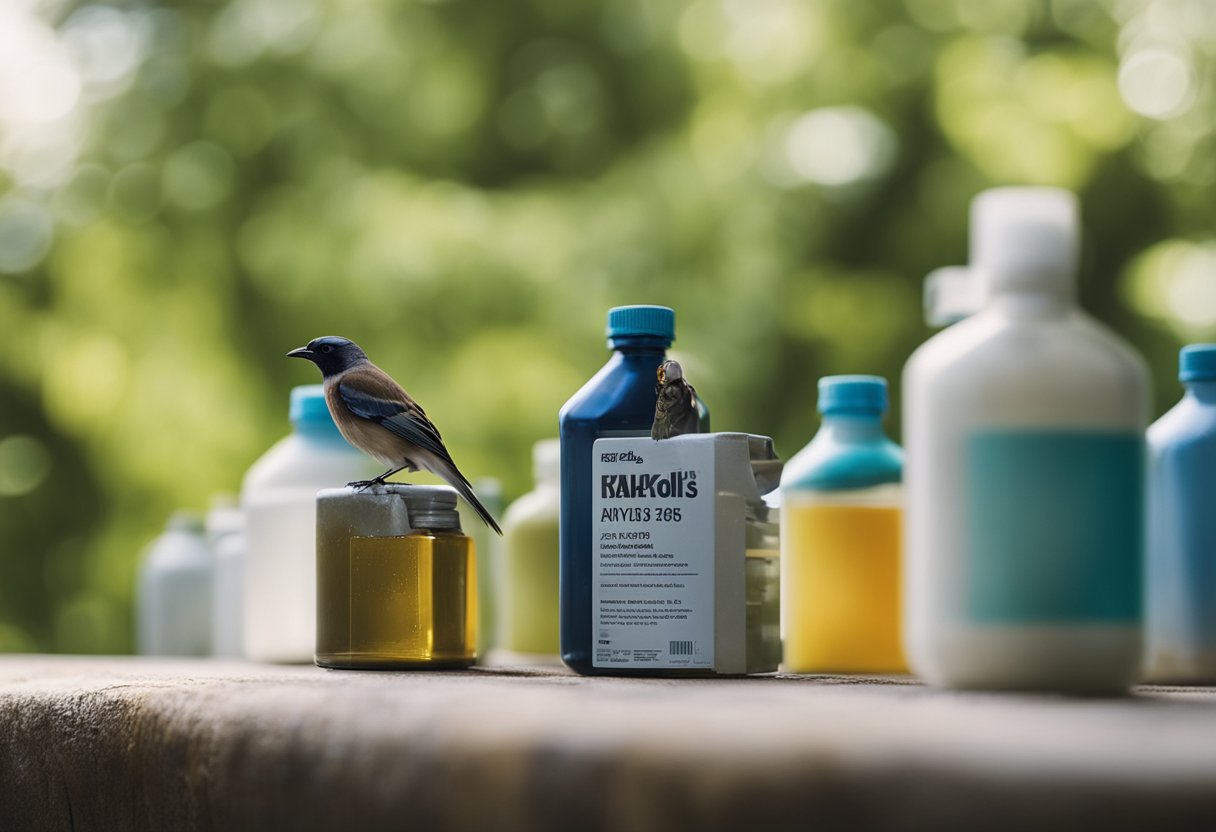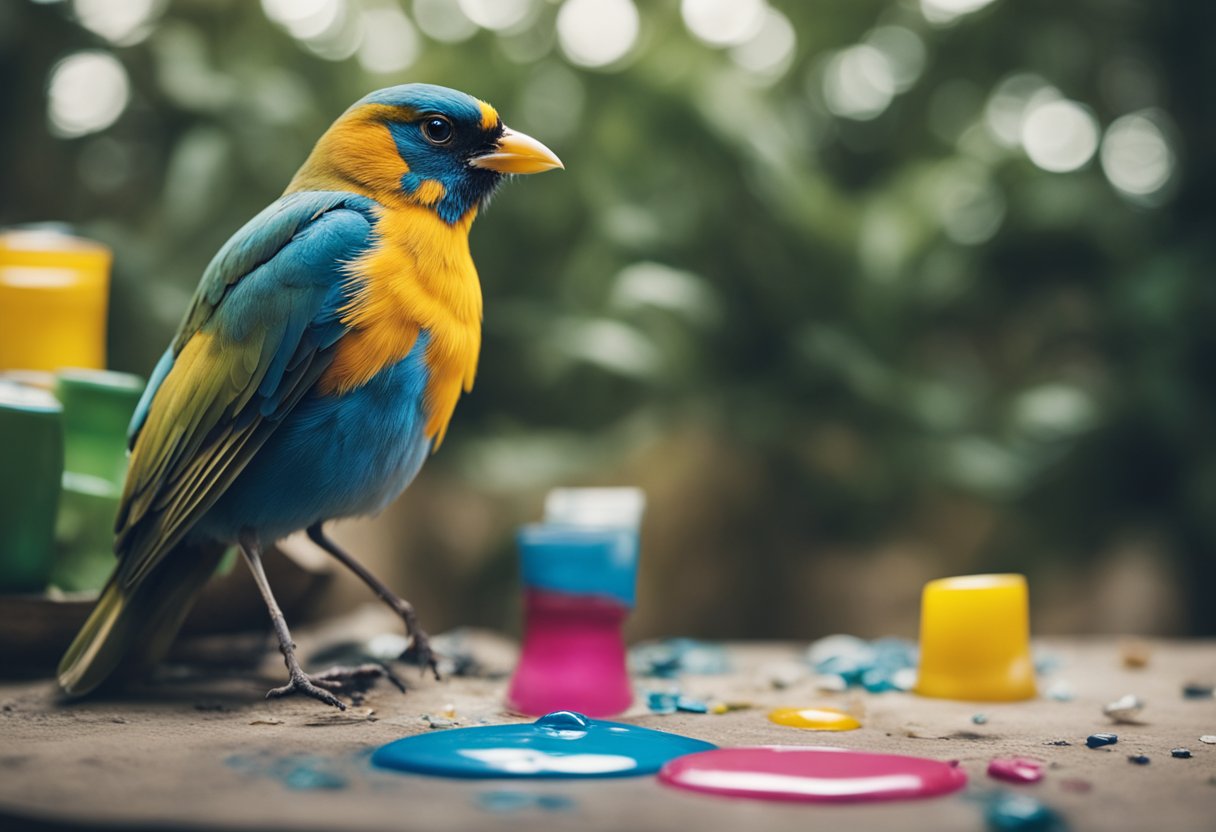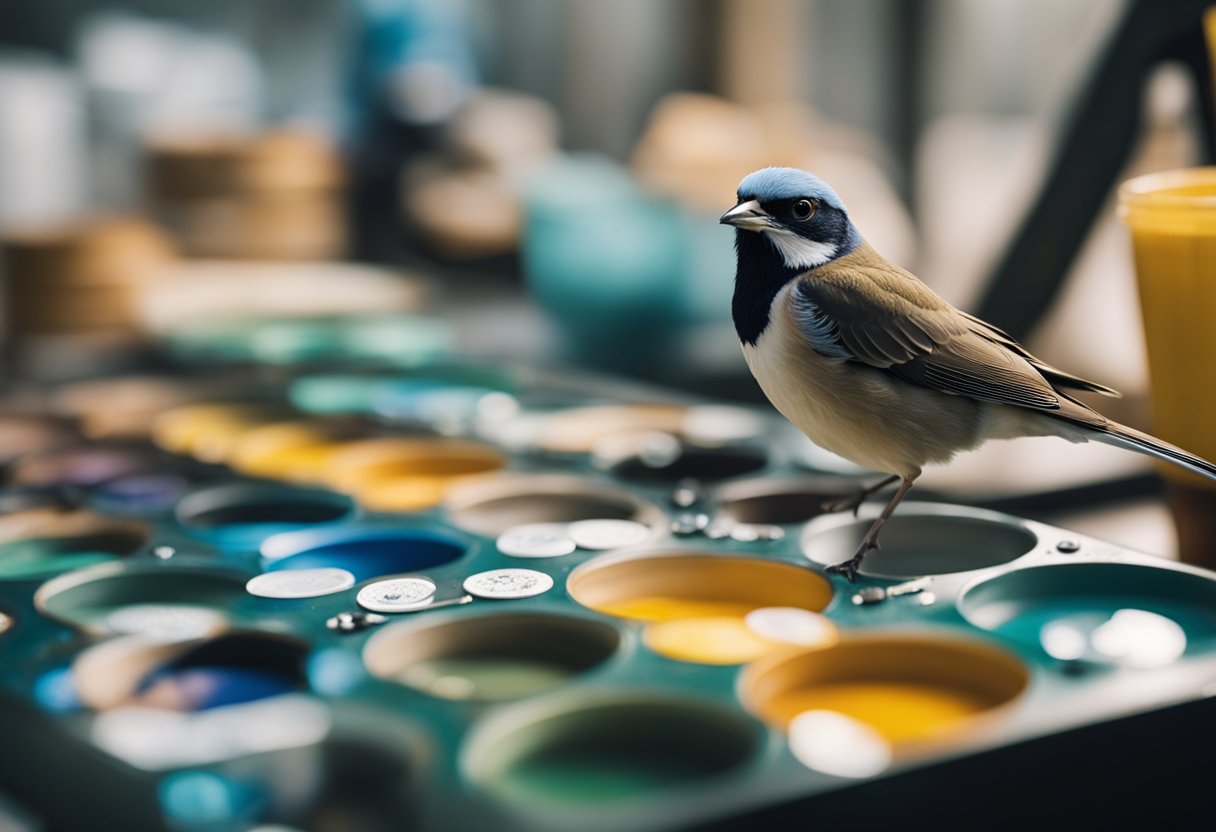As a bird owner, it is important to be mindful of the products and materials that come in contact with your feathered friends. One common question that arises is whether acrylic paint is toxic to birds. Acrylic paint is a popular choice for artists due to its versatility, quick drying time, and vibrant colors. However, it is important to understand the potential risks associated with using acrylic paint around birds.
Acrylic paint is made up of pigments suspended in an acrylic polymer emulsion. According to research from the Environmental Protection Agency (EPA), acrylic paints are generally considered low in toxicity and safe for humans and animals once they have dried. However, it is important to note that some acrylic paints may contain toxic ingredients such as heavy metals, formaldehyde, or volatile organic compounds (VOCs) that can be released into the air during the painting process and potentially harm birds.
Key Takeaways
- Acrylic paint is generally considered low in toxicity and safe for humans and animals once it has dried.
- Some acrylic paints may contain toxic ingredients that can be harmful to birds.
- It is important to use non-toxic, bird-safe paints and take safety precautions when painting around birds.
Understanding Acrylic Paint
As an artist, I have used acrylic paint in many of my projects. Acrylic paint is a popular medium among artists because of its versatility, quick drying time, and ease of use. However, when it comes to using acrylic paint around birds, it is important to understand the components of the paint and their potential impact on birds.
Acrylic paint is made up of pigments, resins, and solvents. The pigments are the colorants that give the paint its hue, while the resins act as the binder that holds the pigments together. Solvents are used to dissolve the resins and make the paint easier to apply.
The solvents used in acrylic paints can be harmful to birds. Some of the solvents used in acrylic paints, such as toluene, xylene, and ethyl acetate, can cause respiratory irritation and other health problems in birds. Therefore, it is important to choose acrylic paints that are free of these harmful solvents.
Additives are often used in acrylic paints to enhance their properties. These additives can include thickeners, extenders, and leveling agents. While these additives are generally safe, it is important to choose acrylic paints that do not contain any harmful additives that could be toxic to birds.
Overall, it is important to choose acrylic paints that are safe for use around birds. When selecting acrylic paints, look for those that are labeled as non-toxic and water-based. These types of acrylic paints are generally safe for use around birds and will not pose a significant risk to their health.
Potential Toxicity of Acrylic Paint
https://www.youtube.com/watch?v=Z2xcBcGlSzU&embed=true
As an artist and bird lover, I have researched the potential toxicity of acrylic paint to birds. While acrylic paint is generally considered safe for humans, it can pose a risk to birds if ingested or inhaled.
Acrylic paint contains chemicals that can be harmful to birds, such as biocides, formaldehyde, and propylene glycol. These chemicals can release toxic fumes during the drying process, which can cause respiratory distress and neurological damage if inhaled by birds. Additionally, some pigments used in acrylic paint, such as cadmium and chromate, can be toxic if ingested by birds.
Birds can also absorb toxic substances through their skin, which can cause a range of symptoms such as lethargy, vomiting, and diarrhea. Zinc and lead are two common metals that can be found in some acrylic paints, and both can be toxic to birds if ingested or inhaled.
To minimize the risk of toxicity, it is important to use acrylic paint in a well-ventilated area and to avoid painting near birds. It is also important to properly dispose of any paint containers and to wash hands thoroughly after handling acrylic paint.
In conclusion, while acrylic paint is generally safe for humans, it can pose a risk to birds if not used properly. By taking proper precautions and being aware of the potential toxicity of acrylic paint, we can ensure the safety of both ourselves and our feathered friends.
Effects on Birds
As a bird owner, it is important to know the potential effects of acrylic paint on your pet bird’s health. Acrylic paint can be harmful to birds if ingested or inhaled. Birds have a highly sensitive respiratory system, and exposure to certain chemicals can cause respiratory irritation, which can lead to health problems.
Inhaling paint fumes can cause respiratory irritation and can lead to breathing difficulties in birds. Birds may also experience seizures if they inhale too much paint fumes. Therefore, it is important to ensure that the area where you are painting is well-ventilated, and your bird is kept away from the area until the paint has dried completely.
Acrylic paint can also be harmful if ingested by birds. Ingesting paint can lead to digestive problems and can cause damage to the bird’s internal organs. Therefore, it is important to keep paint and painting supplies out of reach of your pet bird.
If you suspect that your bird has been exposed to acrylic paint or has ingested it, it is important to consult an avian vet immediately. They can help assess your bird’s health and provide appropriate treatment if necessary.
In conclusion, while acrylic paint can be safe for birds if used properly, it is important to take precautions to ensure that your pet bird is not exposed to harmful chemicals. By keeping your bird away from the area where you are painting, ensuring proper ventilation, and keeping paint and painting supplies out of reach, you can help keep your pet bird healthy and happy.
Safe Alternatives to Acrylic Paint
As we have discussed earlier, acrylic paint may not be directly toxic to birds, but there are potential risks to birds if they come into contact with or ingest the paint. Therefore, it is always better to opt for safe alternatives to acrylic paint. Here are some of the safe alternatives that I recommend:
Water-Based Paints
Water-based paints are a great option for those who want to paint around their birds. They do not contain harmful chemicals like lead and zinc, and are generally safe for birds. One popular option is latex paint, which is water-based and non-toxic. However, make sure to read labels carefully and avoid those with added solvents or additives.
Milk Paint
Milk paint is a non-toxic and eco-friendly option for painting around birds. It is made from all-natural ingredients such as milk protein, limestone, and clay. Milk paint is easy to use, dries quickly, and is water-resistant once it sets.
Non-Toxic Water-Based Paints
Non-toxic water-based paints are another safe option for painting around birds. They are free from harmful chemicals and are generally safe for birds. One popular brand of non-toxic water-based paint is ECOS Paints, which offers a range of non-toxic, eco-friendly paints.
Rust-Oleum
Rust-Oleum is a brand of paint that offers a range of non-toxic, bird-safe paints. They offer a variety of colors and finishes, and their paints are safe for use around birds.
Aerosol Paint
Aerosol paint can be a safe option for painting around birds if you choose the right product. Look for aerosol paints that are labeled as non-toxic and safe for use around birds. One popular brand of non-toxic aerosol paint is Krylon, which offers a range of bird-safe paints.
In conclusion, there are many safe alternatives to acrylic paint that you can use when painting around birds. Always make sure to read labels carefully and choose products that are non-toxic and safe for use around birds.
Practical Applications
When it comes to practical applications, it’s important to know how to use acrylic paint safely around birds. Acrylic paint can be used to camouflage birdhouses, bird feeders, and bird toys to blend in with the natural environment, or to add bright colors to make them more visually appealing. However, it’s important to use acrylic paint that is safe for birds and to take necessary precautions when painting around them.
If you’re renovating bird equipment, such as birdhouses or bird cages, it’s important to remove the birds from the area before painting. Ingesting paint can be harmful to birds’ health, so it’s important to ensure that all paint is completely dry before exposing birds to it. Additionally, it’s important to use non-toxic, odorless acrylic paint that doesn’t give off fumes that could be harmful to birds.
When using acrylic paint to renovate bird equipment, it’s important to choose colors that won’t be harmful to birds. Bright colors can be visually appealing, but they can also attract predators. Camouflage-colored paint can help birdhouses and bird feeders blend in with their surroundings and protect birds from predators.
Bird baths can also be painted with acrylic paint, but it’s important to ensure that the paint is non-toxic and won’t harm birds. When painting bird baths, it’s important to avoid painting the inside of the bath to prevent birds from ingesting paint while drinking water.
In conclusion, acrylic paint can be used safely around birds as long as necessary precautions are taken. By using non-toxic, odorless acrylic paint and ensuring that all paint is completely dry before exposing birds to it, you can safely renovate bird equipment and add color to your backyard.
Safety Precautions when Painting
As a bird owner, it’s important to take precautions when painting with acrylic paint to ensure the safety of your feathered friend. Here are some safety measures I take when painting around birds:
Ventilation
I always make sure to paint in a well-ventilated area. This means opening windows and doors to allow fresh air to circulate. I also use a fan to help disperse any fumes that may be present.
Safe Alternatives
While acrylic paint is generally considered safe for birds, it’s important to use non-toxic or low-toxicity paints when creating artwork around birds. Solvents such as toluene, xylene, and ethyl acetate can cause respiratory irritation and other health problems in birds. Therefore, I use water-based acrylic paints, which are non-toxic and easy to clean up.
Workspace
I set up my workspace in an area where my bird cannot access it. This prevents any accidents from occurring and also helps keep the area clean. I cover my workspace with newspaper or a drop cloth to protect the surface from wear and tear.
Wear and Tear
When handling dry pigments, I wear gloves and a mask to minimize the inhalation of pigment dust. I also make sure to keep wet paint and sealant away from my bird to prevent them from ingesting it.
Poop and Debris
I clean up any debris or paint drips immediately to prevent my bird from ingesting it. I also make sure to cover my bird’s cage with a sheet to protect them from any paint or debris that may fall.
Maintenance
After I’m finished painting, I make sure to clean up my workspace thoroughly. This includes wiping down surfaces, disposing of any paint-soaked materials, and washing my hands. I also make sure to wait until the paint is completely dry before allowing my bird back into the room.
By taking these safety precautions, I can enjoy painting while keeping my bird safe and healthy.
Cost and Availability of Bird-Safe Paints
https://www.youtube.com/watch?v=ZyYPWWr8Dh0&embed=true
When it comes to painting bird cages or creating artwork around birds, it’s important to use bird-safe paints. Fortunately, there are many options available on the market today that are both safe and affordable.
One popular option is acrylic paint, which is non-toxic and odorless, making it a great choice for use around birds. Acrylic paint is also widely available and comes in a variety of colors, making it easy to find the perfect shade for your project.
Another option is low or no VOC (volatile organic compound) paint, which is specifically designed to be safe for use around birds. These paints are made with fewer harmful chemicals and are often odorless, making them a great choice for those who are sensitive to strong smells.
Eco-friendly paints, such as ECOS Paints, are also a great choice for those looking for a safe and environmentally friendly option. These paints are made with natural ingredients and are free from harmful chemicals, making them a great choice for use around birds.
When it comes to cost, bird-safe paints can range in price depending on the brand and type of paint. However, many bird-safe paints are affordable and can be found at most home improvement stores or online.
Overall, there are many options available for those looking to use bird-safe paints. Whether you choose acrylic paint, low or no VOC paint, or eco-friendly paint, it’s important to choose a paint that is safe for use around birds and fits your budget.
Frequently Asked Questions
Are there bird-safe alternatives to acrylic paint?
Yes, there are bird-safe alternatives to acrylic paint. Some examples include watercolor paint, vegetable-based paint, and milk paint. These types of paints are non-toxic and safe to use around birds.
Is Rustoleum spray paint safe for birds?
According to The Bird Identifier, Rustoleum spray paint is not safe for birds. This type of paint contains chemicals that can be harmful to birds if inhaled or ingested.
Can I use Little Knights paint around birds?
Yes, Little Knights paint is safe to use around birds. This paint is non-toxic and contains no harmful chemicals that could harm your feathered friends.
Is it safe to paint bird houses with acrylic paint?
Yes, it is safe to paint bird houses with acrylic paint as long as the paint is completely dry before exposing your bird to it. According to Bird Cages Here, acrylic paint is completely safe for use on bird houses and cages.
What types of paint are safe for birds?
Oil-based, latex, acrylic, or watercolor paints are safe for birds. These paints are non-toxic and will not cause any harm to birds. Paints should also contain low or no Volatile Organic Compounds (VOCs) with toxic fumes when freshly painted. All paint must be fully dried before bird usage.
Is it safe to paint a bird cage with acrylic paint?
Yes, it is safe to paint a bird cage with acrylic paint as long as the paint is completely dry before exposing your bird to it. However, it is important to note that some bird owners prefer not to paint their bird cages at all, as birds may chew on the paint and ingest it.

Hi, I’m Sal Muller of Tooltrip.com. My DIY experience led me to understand essential power tools for home projects. Tooltrip.com guides enthusiasts and professionals in choosing right tools for any job. I provide concise top tool reviews for easier, efficient DIY.

